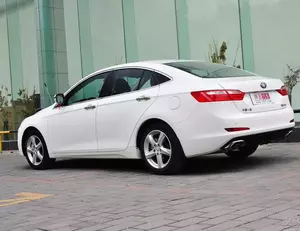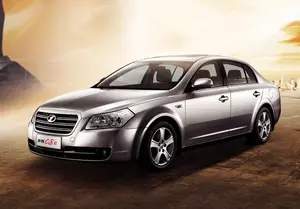
| Vehicle | Precise engine size | Difference from world average | Engine size to consumption ratio | Horsepower from 1 L | Engine size to 100 kg of weight |
|---|---|---|---|---|---|
| 2.0 |
2 L (1999 cc) |
14.8% smaller | - | 74 hp from 1 L | 133 cc to 100 kg |
| 1.8 T |
1.8 L (1796 cc) |
23.4% smaller | - | 103 hp from 1 L | 120 cc to 100 kg |
| Vehicle | 2.0 |
|---|---|
| Precise engine size | 2 L (1999 cc) |
| Difference from world average | 14.8 smaller |
| Engine size to consumption ratio | - |
| Horsepower from 1 L | 74 hp from 1 L |
| Engine size to 100 kg of weight | 133 cc to 100 kg |
| Vehicle | 1.8 T |
| Precise engine size | 1.8 L (1796 cc) |
| Difference from world average | 23.4 smaller |
| Engine size to consumption ratio | - |
| Horsepower from 1 L | 103 hp from 1 L |
| Engine size to 100 kg of weight | 120 cc to 100 kg |

| Vehicle | Precise engine size | Difference from world average | Engine size to consumption ratio | Horsepower from 1 L | Engine size to 100 kg of weight |
|---|---|---|---|---|---|
| 2.3 |
2.26 L (2261 cc) |
3.6% smaller | - | 72 hp from 1 L | 151 cc to 100 kg |
| 2.0 |
2 L (1999 cc) |
14.8% smaller | - | 74 hp from 1 L | 143 cc to 100 kg |
| Vehicle | 2.3 |
|---|---|
| Precise engine size | 2.26 L (2261 cc) |
| Difference from world average | 3.6 smaller |
| Engine size to consumption ratio | - |
| Horsepower from 1 L | 72 hp from 1 L |
| Engine size to 100 kg of weight | 151 cc to 100 kg |
| Vehicle | 2.0 |
| Precise engine size | 2 L (1999 cc) |
| Difference from world average | 14.8 smaller |
| Engine size to consumption ratio | - |
| Horsepower from 1 L | 74 hp from 1 L |
| Engine size to 100 kg of weight | 143 cc to 100 kg |

| Vehicle | Precise engine size | Difference from world average | Engine size to consumption ratio | Horsepower from 1 L | Engine size to 100 kg of weight |
|---|---|---|---|---|---|
| 2.0 |
2 L (1999 cc) |
14.8% smaller | - | 74 hp from 1 L | 143 cc to 100 kg |
| 2.3 |
2.26 L (2261 cc) |
3.6% smaller | - | 72 hp from 1 L | - |
| Vehicle | 2.0 |
|---|---|
| Precise engine size | 2 L (1999 cc) |
| Difference from world average | 14.8 smaller |
| Engine size to consumption ratio | - |
| Horsepower from 1 L | 74 hp from 1 L |
| Engine size to 100 kg of weight | 143 cc to 100 kg |
| Vehicle | 2.3 |
| Precise engine size | 2.26 L (2261 cc) |
| Difference from world average | 3.6 smaller |
| Engine size to consumption ratio | - |
| Horsepower from 1 L | 72 hp from 1 L |
| Engine size to 100 kg of weight | - |